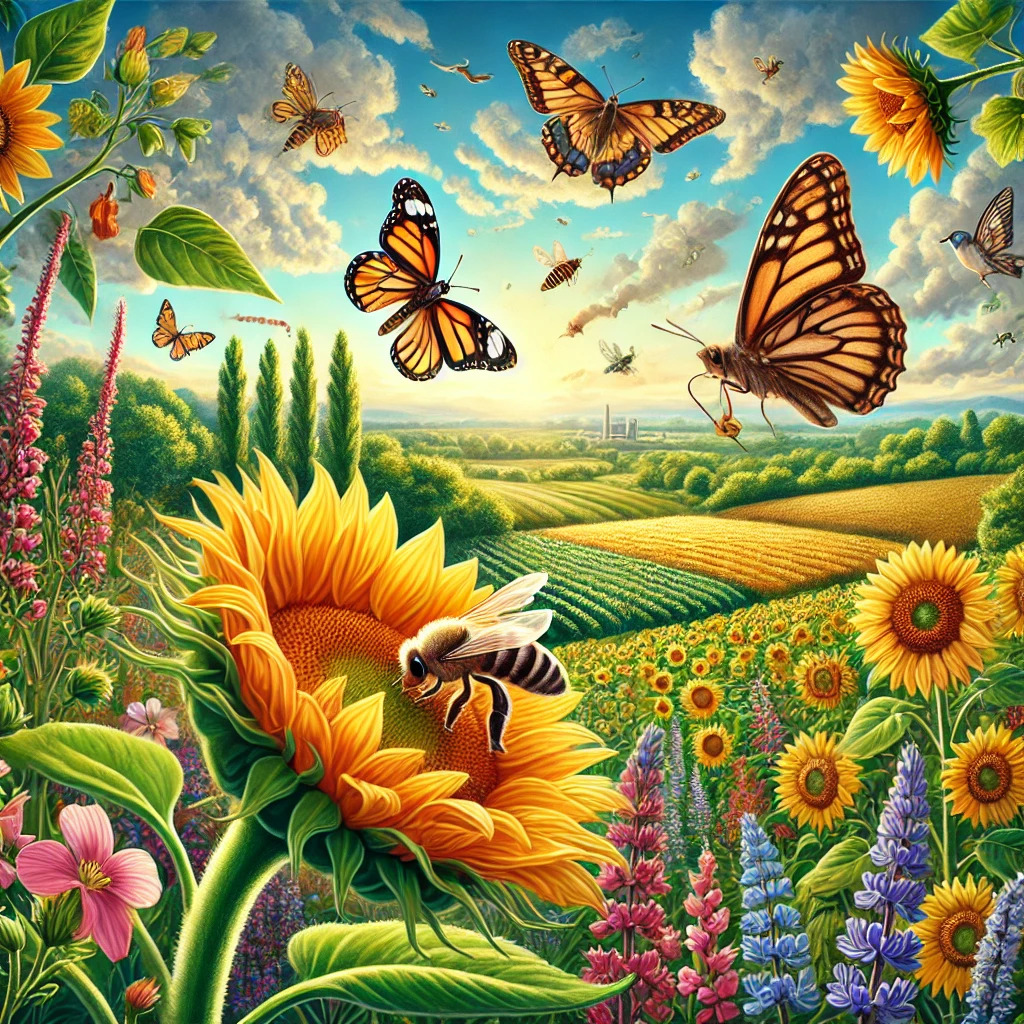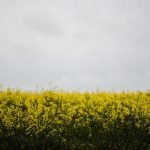
The Role of Pollinators in Agriculture
Pollinators, including bees, butterflies, and birds, are essential for the stability of ecosystems and agricultural productivity. They play a crucial role in fertilizing crops by transferring pollen, which leads to fruit and seed production. Over 75% of flowering plants and about 35% of global food crops depend on pollinators. However, their populations are declining due to various factors, including habitat destruction, climate change, and the extensive use of pesticides in farming.
Pesticides and Their Impact on Pollinators
What Are Pesticides?
Pesticides are chemical or biological substances used to control pests, weeds, and plant diseases in agriculture. They include insecticides, herbicides, and fungicides, each targeting different crop threats. While these chemicals improve agricultural yield, they also pose risks to non-target organisms, particularly pollinators.
How Insecticides Affect Bees
Insecticides are specifically designed to eliminate harmful insects, but they often impact beneficial ones like bees. Neonicotinoids, a widely used class of insecticides, have been linked to disruptions in bee foraging behavior, navigation, and reproduction. When bees come into contact with insecticides while collecting nectar or pollen, they experience neurotoxic effects that impair their ability to return to their hive.
- Exposure to insecticides can reduce bee lifespan and colony health.
- Contaminated nectar and pollen affect larvae development, leading to weakened colonies.
Pesticide Residue in Pollinator Habitats
Many pesticides remain in the environment for extended periods. Residues can be found in soil, water, and plants, exposing pollinators to toxic chemicals even after initial application. This long-term exposure contributes to chronic poisoning and a decline in pollinator populations.
The Relationship Between Farming Practices and Pollinator Health
The Use of Pesticides in Modern Agriculture
Intensive farming practices heavily rely on pesticides to protect crops from pests such as Whitefly and fungal infections like Powdery Mildew. While these chemicals increase yield, they create a hostile environment for pollinators by eliminating the plants they rely on for food.
Alternatives to Chemical Pesticides
Farmers are exploring alternative pest control methods to mitigate the adverse effects of pesticides on pollinators. One approach involves integrating botanical extracts, such as Miraj botanical extract, which provides effective pest management while reducing harm to beneficial insects. These natural solutions contribute to sustainable farming without compromising pollinator populations.
The Role of Pollinators in Biodiversity
Disrupting Natural Ecosystems
The decline of pollinators affects not only agriculture but also entire ecosystems. Bees and other pollinators support wild plant reproduction, ensuring biodiversity. A reduction in pollinator populations disrupts food chains and weakens ecological resilience.
The Economic Impact of Pollinator Decline
Pollinators contribute significantly to global agriculture, with an estimated economic value of $235-$577 billion annually. Their decline poses a severe threat to food security, increasing the cost of production and reducing crop yields. Farmers who depend on pollination-intensive crops like almonds, apples, and blueberries face significant losses.
“If the bee disappears from the surface of the Earth, man would have no more than four years to live.“ – Attributed to Albert Einstein.
Solutions for Protecting Pollinators
Reducing Pesticide Use
Reducing pesticide applications is one of the most effective ways to protect pollinators. Integrated Pest Management (IPM) promotes a balanced approach that combines biological, mechanical, and chemical methods to minimize pesticide dependency.
Promoting Pollinator-Friendly Habitats
Creating diverse landscapes with flowering plants, hedgerows, and cover crops provides pollinators with safe foraging grounds. Avoiding pesticide application during blooming seasons also helps protect them from exposure.
Advocating for Regulatory Changes
Governments and organizations worldwide are pushing for stricter regulations on harmful pesticides. The European Union has already restricted several neonicotinoids due to their impact on bees. Encouraging similar policies globally will help safeguard pollinator populations.
FAQs
How do neonicotinoids impact bee colonies?
Neonicotinoids affect bees’ central nervous systems, impairing their ability to forage, navigate, and reproduce. Prolonged exposure weakens colonies and increases mortality rates.
Can organic farming help protect pollinators?
Yes, organic farming reduces pesticide use and promotes biodiversity, creating a safer environment for pollinators.
What are some natural alternatives to chemical pesticides?
Biological controls, crop rotation, and botanical extracts offer sustainable pest management solutions without harming pollinators.
Looking Forward: A Shared Responsibility
The future of pollinators depends on collective action. Farmers, policymakers, scientists, and consumers all have a role in reducing pesticide dependency and promoting sustainable farming practices. Supporting organic products, planting pollinator-friendly gardens, and advocating for pesticide regulations are small but impactful steps toward preserving these essential creatures.





Leave a Reply